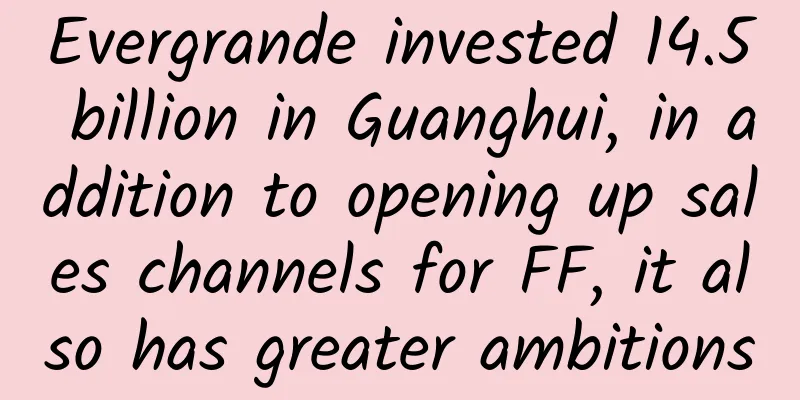PPT skills for event planning with a million-dollar budget!

|
As long as you pay attention to the following points when making an activity plan, an activity planning plan will be roughly formed: 1. Make sure to clearly explain the logic of the event, such as the reason for holding the event, process details, venue personnel, etc. 2. Elaborate on the details of the activity and explain how to carry out the specific activity 3. Clearly list the venue, materials, personnel and other conditions required to hold the event 4. Clearly list the costs of holding the event Now let us demonstrate how to make a complete event planning plan. 1. User analysis To plan an excellent event, you must first understand the target audience of the event. Therefore, analyzing user portraits is the first step in making an event planning plan. The data that makes up the user portrait is diverse. We can analyze it from aspects such as gender, age, occupation and income. Multi-angle analysis helps us build a clearer and more three-dimensional user portrait, making the activities more targeted. Logical templates such as parallelism, pyramids, and contrast in the text are effective tools for portraying user portraits. Pure imagination and description are not convincing, so we need to point out the source of the data when describing user characteristics. After completing the user portrait, we can use a question to introduce the following content. At this time, we can use graphic layout or famous quotes templates. 2. Event theme and details After raising the question at the end of the previous chapter, we can respond with a brief sentence that points out the theme of this activity. Single-sheet graphic layouts and famous quote templates can create this effect. After the foreshadowing in the previous article, the interest of the readers of the plan has been aroused, and they are eager to know what kind of activities will be carried out in the following text to solve these users' pain points. At this time, we can start to introduce the activity plan in detail. First, we can briefly introduce the process arrangement of the activity by inserting a process or timeline template. Then, for specific individual activities, we can use graphic layout or templates in case-activity introduction to introduce them. The picture + text format can be used to introduce most activities. For some repetitive game activities, we can use the loop template in the text to explain the rules and processes. 3. Venue, personnel and materials After introducing the event content in detail, we need to let the readers of the plan understand the information such as venue, personnel and materials required to hold the event. First, use graphic layout to introduce the venue, and use real-life photos with map location to make the venue information clear at a glance. For personnel, you can use the New-Case-Character Introduction template, and then use the Main Text-Organization template to introduce each person's functions and projects they are responsible for. Graphic layout and case-poster templates are both excellent ways to display materials. After selecting a suitable template, you only need to replace the actual material design pictures used in the PPT. 4. Publicity Planning The promotional effect of offline activities is very limited. Promoting through online channels can effectively amplify the influence of the event. The first step in making a publicity plan is to establish a publicity timeline, clarify the release time nodes of online publicity activities, and cooperate with offline activities to promote the campaign. Then use the case-character introduction template to introduce the key personnel of the online promotional event, such as which industry KOLs were invited to promote the event. Of course, the effect diagram of the promotional activities is indispensable. By selecting a suitable template in the resource library of case-screenshot description, you can simulate the display effect of online promotion. 5. Quotation The last part of the plan needs to introduce the various expenses of holding the event. First, you can use a visual chart - a bar chart to show the value and proportion of each expense. Then we need to create a new blank slide, insert a table, and fill in the costs of each project process for the event. Finally, insert the end page to end. The above is the whole process of making an event planning plan. Now let’s review the key points: 1. Start with user or market analysis to highlight the importance and necessity of this activity 2. Clearly state the theme of the event, explain the details of the event, and the specific conditions required to hold the event 3. Use a table to clearly list the various expenses incurred by the activity The production demonstration shown in this article is just one of many event planning plans. We need to adjust the plan to varying degrees for different scenarios and content, and avoid copying it. Author: WPS Production Source: WPS Production |
<<: Jack Ma is so awesome, why do we still need TV stations for Singles’ Day?
>>: Understand Toutiao’s information flow ads in one article!
Recommend
We were chatting happily, why did we start arguing?
Produced by: Science Popularization China Produce...
Why are older people more vulnerable to online rumors?
Nowadays, we play with our phones every day, and ...
How should a new brand name itself?
“Words are finite, but their meanings are infinit...
What to do with your WeChat account if you lose your phone? Tencent releases new official guide
Losing a mobile phone is probably one of the most...
"Evil spirit possession" or brain disease? There are so many misunderstandings about epilepsy
The word epilepsy comes from the Greek epilambane...
App Store keyword algorithm adjustment: popularity increased, vocabulary expanded, and coverage increased!
Over the past weekend, we monitored that some cha...
Integrated marketing communication full case skills!
Let me first summarize it in a brief outline. A c...
World Pancreatic Cancer Day丨Faced with the “King of Cancer”, can we only surrender?
The third Thursday of November is World Pancreati...
Key points for Google English SEO optimization
Before studying this tutorial, you must first und...
Is there any trick in giving away POS machines for free? Can you believe it?
When it comes to purchasing POS machines, many pe...
How to choose a promotion platform? Summary of 7 information flow problems
Let’s take a look and see if you have ever encoun...
Building a giant "super telescope" on the moon? It's not easy
Recently, French scientists announced a plan to b...
Top 10 advertising models during the epidemic
If we were to find a keyword to describe the livi...
Bidding personnel visit homes to analyze competitors? How to write a competitor analysis?
For bidders, in addition to daily data analysis, ...
How did people open cans when there were no cans?
Why not just change the name of the can to the di...









